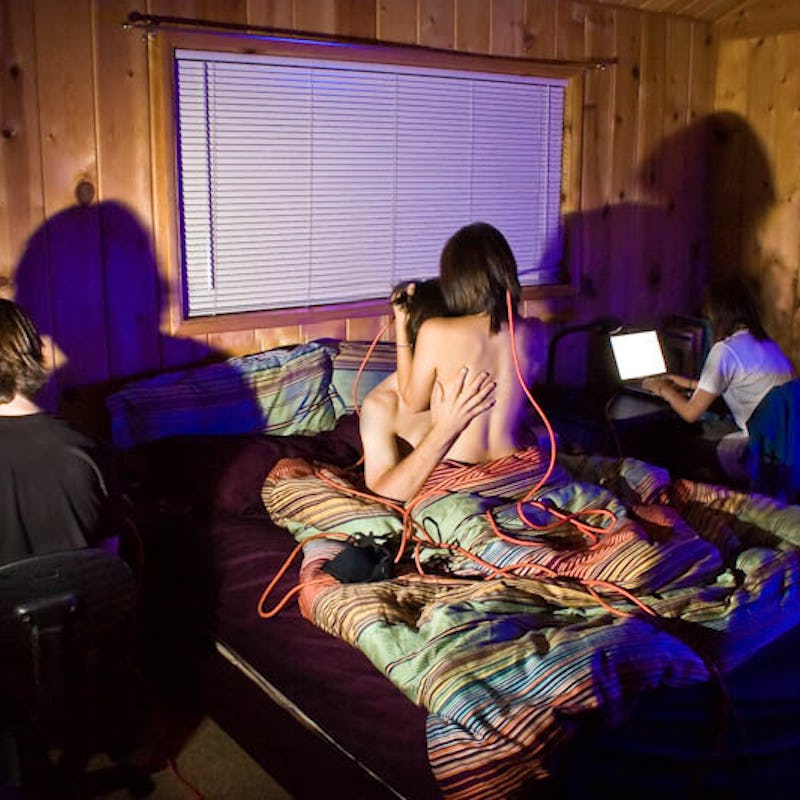Can Great Product Design Save Sex and the Modern Relationship?
Pills, data, and displays could be the future of romance.

Dating apps and leaps forward in marital aid technology are not solving the problems that have faced the romantically inclined since Sophocles whined that, “Trust dies and mistrust blossoms.” But is that because these problems are intractable or because those technologies don’t address relationship issues head on? The team at Object Solutions operates under the theory that technology can provide solutions if we’re honest about what we want those solutions to be.
OS’ “The Future of Love” initiative, which just kicked off, is intended to be a genuine inquiry into the everyday inconveniences that diminish romance and a search for products that might augment it. Ernesto D. Morales, the company’s founder, isn’t saying technology can solve all matters of the heart, but he does think it’s worth exploring. He posed the following question to Inverse: “How will we know what changes driven by technology we prefer or don’t prefer if we don’t think about what those could be?”
Take a second and read that again. It’s a reasonable point.
With his new project, Morales is taking the problems that arise at various stages of a relationship — like measuring someone’s interest or moving in together — and proposing hypothetical tech-based solutions. In essence, he’s doing QA on the most complex UX of all. Here are some of the questions coming out of that process:
- What if we could read someone’s pulse on a screen to tell whether they were into a date?
- What if you could have sex with a hologram?
- Why not take an awkwardness-erasing pill before meeting the parents?
- Better yet, why not have a pill to slip them?
He’s aware these ideas sound wild (and unethical). That’s the whole point. It’s less about coming up with viable solutions and more about asking how far we’re willing to let technology in.
Teaming up with NYU sociologist Shelly Ronen, Morales is designing a series of hypothetical products to help us push limits. The two are working on an illustrated “user manual” for relationships and will soon be holding a speed dating-style workshop where newly paired couples will try their hand at imagining tech-based love solutions. “Wearables and solubles” will be a part of their imagined world, where they hope issues of communication, distance, and intimacy can all be addressed.
For Ronen, there’s no debating that technology can offer solutions to relationship woes. It did so just 50 years ago: “The internet and the cell phone are the automobile of the 1990s-2000 youth generation,” she explained to Inverse, referencing the legacy of “Make Out Point” and the need for private spaces. Her question is how to examine the incidental romantic benefits of consumer tech in order to understand what new products with more direct benefits might look like.
In a sense, the technologies here are the questions themselves and the legitimization of technological inquiry into romance. Marital aids aren’t the talk of Silicon Valley, but in many cases they provide the service advertised. Surely there are other things we can do and products we can build — products that don’t vibrate, but do help us get in tune with each other.